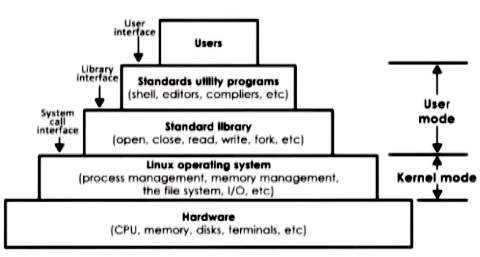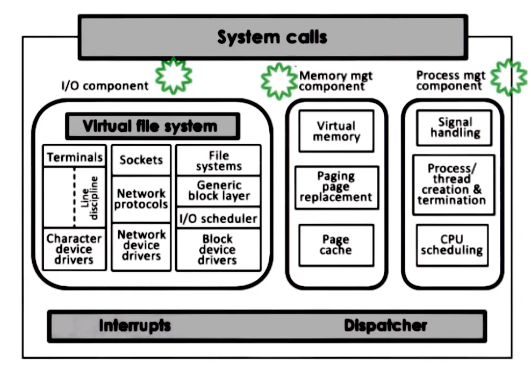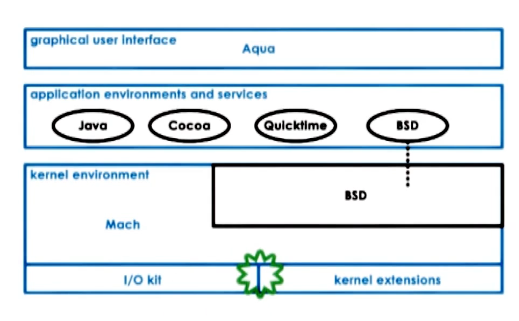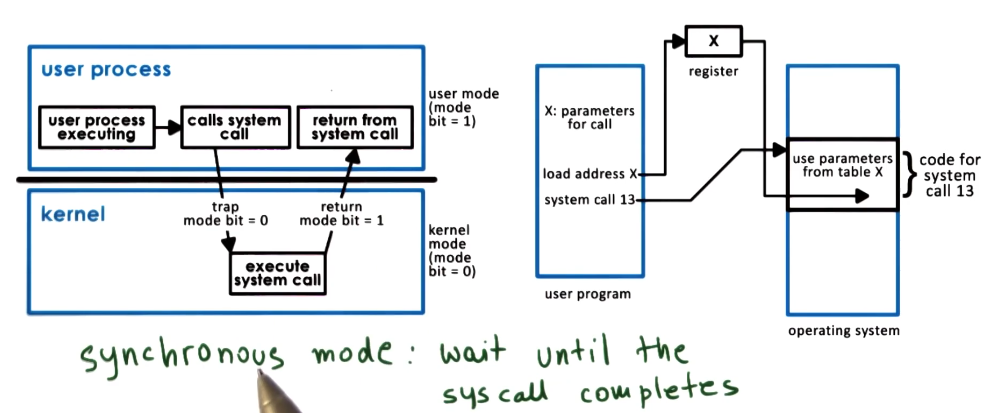Week 1 - Introduction to Operating systems
Operating system (OS)
Link to originalOperating system (OS)
A operating system is a software that abstracts and arbitrates computer hardware away from the software running on it.
This layer of software:
- has privileged access to the underlying hardware,
- hides the hardware complexity,
- manages hardware on behalf of applications according to predefined policies and,
- ensures that applications are isolated and protected from one another.
Metaphor
The OS is a lot like a toyshop manager. They are required to:
- Direct the operational resources
- Controls use of employees time,
- Distribute tools and parts between workers
- Enforces working policies
- Ensures fairness between workers,
- Make sure toys are made safely,
- How to cleans-up after the job has been completed.
- Mitigates difficulty of complex tasks
- Simplifies operations for each worker to do,
- Chooses optimal task allocation to improve performance.
In comparison an OS does the following:
- Direct the operational resources
- Controls the use of CPU and memory,
- Controls the use of peripheral devices.
- Enforces working policies
- Can ensure fair use of the resources between different processes,
- Limit resources a certain process has access to.
- Mitigates difficulty of complex tasks
- Abstracts hardware (system calls).
Examples
- Desktop
- Microsoft Windows
- UNIX-based
- Mac OS X (BSD)
- Linux
- Embedded
- Android
- A form of linux
- IOS
- Symbian
- Android
We will focus on Linux in this course.
OS elements
There are 3 main OS elements:
Abstractions:
- process,
- thread,
- file,
- socket, and
- memory page.
Mechanisms:
- create,
- schedule,
- open,
- write, and
- allocate.
Policies:
Example: Memory management
Design principles
- Separation of mechanism and policy
- Implement flexible mechanisms that support many policies
- In different settings different policies make more sense.
- Optimise for common case
- Where will the OS be used?
- What will the user want to execute on that machine?
- What are the workload requirements?
User/Kernel protection
Proccess modes
Link to originalProcess modes
Processes normally has at least 2 modes.
- Kernel mode: Which has privileged access to hardware resources.
- User mode: Must access resources through the OS via system calls.
The mode is determined by a bit set in the CPU. If an application running in user mode tries to access hardware this sends a trap instruction to the OS for the operating system to inspect that call. This will freeze the application whilst this is being investigated.
Trap instruction
Link to originalTrap instruction
A trap instruction is sent to when an application in user mode tries to access hardware without using a system call. This is passed to the OS to judge if the call was illegitimate or harmful. Whilst this is happening the process is stopped from doing anything else.
User mode application have to access hardware through system calls. The OS can notify applications through signals.
System call flow chart
System call
Link to originalSystem call
An application running in user mode makes a system call to the OS when it needs to access hardware. The OS then runs the associated call in kernel mode to effect the hardware. This is normally costly for the application as it has to give over control to the kernel.
Some example system calls are:
- Open (file),
- Send (socket), or
- mmap (memory).
OS architecture
At first OS included all the features within one monolithic application. This had the following advantages:
- You have everything already, you do not need to go somewhere else, and
- You can use compile time optimizations to improve efficiency. Though had the following downsides:
- Lower customisation, portability and manageability,
- Higher memory footprint to run the OS, and
- Lower performance when you do not need all aspects of the OS.
OS such as LINUX instead have gone for a modular approach, where OS applications have to conform to a standard interface for system calls. The user then can add the modules to the OS that they want to use. This had the following advantages:
- Easier to maintain as it is less code,
- Smaller footprint in memory,
- Less resources used to run the OS, Though comes with the following down sides:
- Indirection can effect performance,
- Maintenance can be an issue as you rely on lots of different code bases that can introduce bugs.
For embedded devices another architecture is common called a Micro-kernel. These typically only handle memory and process management. Though adds a standard Inter process communication call - as services such as file systems or disk drivers are now application level processes rather than handled by the OS. This has the following advantages:
- They are normally a very small code base.
- It is easy to verify behaviour, so you can be sure the OS behaves well. Though they come with a lot of down sides:
- They are not normally portable as they are designed for a specific bit of hardware.
- Software development is more complex as they need to interact with difference processes that normally would be part of the OS.
- There is lots of user/kernel crossing as they need to use the IPC a lot.
Linux
The linux OS is built in a layer architecture to make it simpler to use.

The kernel itself has a couple of components that can all be switched out for specific users needs.

Mac
Mac uses a micro-kernel for all low level operations with a BSD component provides a unix interface for the rest of the OS.

/../../images/os_visual.png)
